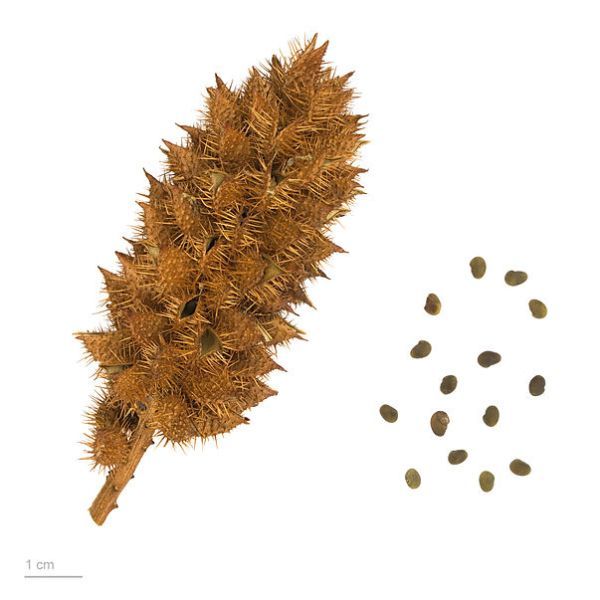Liquorice Seeds (Glycyrrhiza Glabra)
Liquorice Seeds (Glycyrrhiza Glabra)
Liquorice, or licorice, is the root of Glycyrrhiza glabra from which a sweet flavour can be extracted. The liquorice plant is a legume native to southern Europe, India, and parts of Asia. It is not botanically related to anise, star anise, or fennel, which are sources of similar flavouring compound.

Delivery
All orders shipped with UPS Express.
Always free shipping for orders over US $250.
All orders are shipped with a UPS tracking number.
Returns
Items returned within 14 days of their original shipment date in same as new condition will be eligible for a full refund or store credit.
Refunds will be charged back to the original form of payment used for purchase.
Customer is responsible for shipping charges when making returns and shipping/handling fees of original purchase is non-refundable.
All sale items are final purchases.
Help
Give us a shout if you have any other questions and/or concerns.
Email: contact@domain.com
Phone: +1 (23) 456 789
Availability: In stock
SKU
Glycyrrhiza Glabra
Liquorice, or licorice, is the root of Glycyrrhiza glabra from which a sweet flavour can be extracted. The liquorice plant is a legume native to southern Europe, India, and parts of Asia. It is not botanically related to anise, star anise, or fennel, which are sources of similar flavouring compounds. The word liquorice / licorice is derived (via the Old French licoresse) from the Greek ?????????? (glukurrhiza), meaning "sweet root", from ?????? (glukus), "sweet" + ???? (rhiza), "root", the name provided by Dioscorides. It has been traditionally known and used as medicine in Ayurveda for rejuvenation.
It is a herbaceous perennial, growing to 1 m in height, with pinnate leaves about 7?15 cm (3?6 in) long, with 9?17 leaflets. The flowers are 0.8?1.2 cm (1/3 to 1/2 in) long, purple to pale whitish blue, produced in a loose inflorescence. The fruit is an oblong pod, 2?3 cm (1 in) long, containing several seeds. The roots are stoloniferous.
| Label | Glycyrrhiza Glabra |
|---|---|
| Common name | Liquorice |
| Family | Fabaceae |
| Genus | Glycyrrhiza |
| Species | Glycyrrhiza glabra |
| Therapeutic uses | Glycyrrhizin has also demonstrated antiviral, antimicrobial, anti-inflammatory, hepatoprotective, and blood pressure-increasing effects in vitro and in vivo, as is supported by the finding that intravenous glycyrrhizin (as if it is given orally very little of the original drug makes it into circulation) slows the progression of viral and autoimmune hepatitis. Liquorice has also demonstrated promising activity in one clinical trial, when applied topically, against atopic dermatitis. Additionally, liquorice may be effective in treating hyperlipidaemia (a high amount of fats in the blood). Liquorice has also demonstrated efficacy in treating inflammation-induced skin hyperpigmentation. Liquorice may also be useful in preventing neurodegenerative disorders and dental caries. The antiulcer, laxative, antidiabetic, anti-inflammatory, immunomodulatory, antitumour and expectorant properties of liquorice have been investigated. The compound glycyrrhizin (or glycyrrhizic acid), found in liquorice, has been proposed as being useful for liver protection in tuberculosis therapy, but evidence does not support this use, which may in fact be harmful. |
| Germination | Liquorice, which grows best in well-drained soils in deep valleys with full sun, is harvested in the autumn two to three years after planting. Countries producing liquorice include Iran, Afghanistan, the People?s Republic of China, Pakistan, Iraq, Azerbaijan, Uzbekistan, Turkmenistan, and Turkey. |
| Price View | Price Range |

